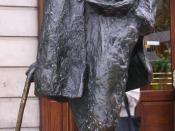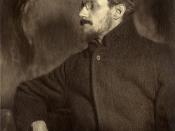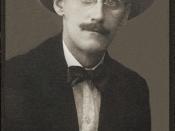In Araby, a short story written by James Joyce in 1914, the allure of new love and the loss of innocence are seen throughout. The story is narrated by a young boy who finds that he is ultimately derided by mere vanity, and comes to realize that what he was always told about love and how he always pictured it is largely fictional. Through Joyce's use of symbolism and allusion, the narrator faces the challenge of being blinded by beauty.
The story begins as the narrator, an unnamed boy, describing North Richmond Street-the street on which he lives. Throughout the first part of the story, Joyce uses reoccurring religious symbols to help show the beginning of the narrator's loss of innocence, or fall from grace. "The wild garden behind our house contained a central apple-tree and a few straggling bushesâ¦" in the story of Adam and Eve, God tells them to never eat from the fruit of the central apple-tree.
He tells them that if they do they will receive the knowledge of good and evil and die in the sense of grace. The same principle or theme is applied to the narrator when he refers to the apple tree in his back yard. The girl in this story, however, symbolizes the narrator's fall from grace. The narrator also says that the former tenant of his house was a priest, symbolizing Joyce's allusions to the loss of innocence theme. Joyce also uses the symbol of the blind street which the narrator lives on, as well as his house to show the blindness of the boy: "North Richmond Street, being blindâ¦"; "An uninhabited house of two stories stood at the blind end, detached from its neighbors in a square ground." As the story continues, we see the introduction of Mangan's...


